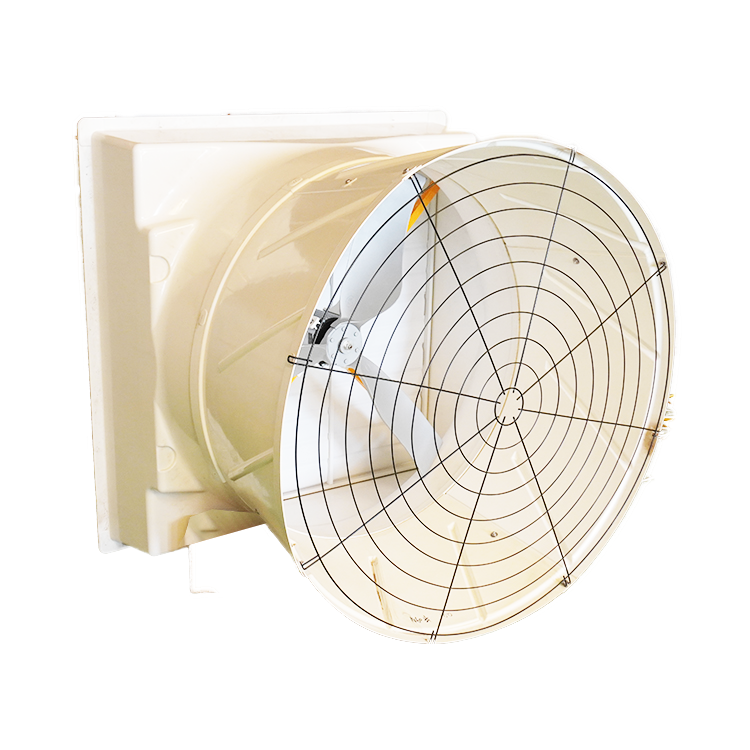Introduction
In the realm of industrial applications, the choice of fans plays a pivotal role in ensuring optimal performance and durability in harsh conditions. While traditional metal fans have been the norm for decades, Fiberglass Reinforced Plastic (FRP) fans are emerging as game-changers, offering a multitude of advantages over their metal counterparts.

Strengths and Properties of Fiberglass Reinforced Plastic (FRP) fans
FRP, a composite material comprising fibers embedded in a polymer matrix, possesses a remarkable set of properties. Its inherent corrosion resistance, exceptional durability, and lightweight nature make it an ideal candidate for industrial fan construction. When compared to traditional metal fans, FIBERGLASS REINFORCED PLASTIC (FRP) FANS stands out due to its ability to withstand corrosive environments without compromising performance.
Corrosion Resistance and Durability
One of the most notable advantages of FRP fans lies in their unparalleled resistance to corrosion. In industries dealing with corrosive substances or operating in harsh environments, Fiberglass Reinforced Plastic (FRP) fans outshine metal counterparts by retaining structural integrity over prolonged periods. This durability not only ensures longer service life but also minimizes downtime and maintenance costs, making FRP a cost-effective solution.
Lightweight Nature and Energy Efficiency
The lightweight nature of FRP presents several advantages in terms of installation, transportation, and operational efficiency. Compared to heavy metal fans, FRP counterparts significantly reduce the load on support structures and consume less power due to their reduced weight. This results in enhanced energy efficiency, translating into cost savings and lower environmental impact over the fan’s lifecycle.
Flexibility in Design and Customization
Fiberglass Reinforced Plastic (FRP) fans offer unparalleled flexibility in design and customization. Their moldability allows for the creation of intricate shapes and sizes tailored to specific industrial needs. Whether it’s altering blade geometry or modifying dimensions, Fiberglass Reinforced Plastic (FRP) fans can be customized to optimize airflow, pressure, and efficiency, providing a solution tailored precisely to the application’s requirements.
Noise Reduction and Safety Considerations
Another advantage of Fiberglass Reinforced Plastic (FRP) fans is their capability to reduce noise compared to traditional metal fans. The composition of FRP inherently dampens noise transmission, contributing to a quieter operational environment. Additionally, FRP’s non-conductive properties enhance safety, mitigating risks associated with electrical conductivity and reducing the likelihood of workplace accidents.
Environmental Impact and Sustainability
Beyond their performance benefits, Fiberglass Reinforced Plastic (FRP) fans exhibit eco-friendly characteristics. Their recyclability and reduced carbon footprint position them as environmentally conscious alternatives to metal fans. The production process of FRP involves fewer resources and energy, aligning with sustainability goals while maintaining high performance and durability.
Case Studies or Examples
Numerous industrial sectors have witnessed the advantages of Fiberglass Reinforced Plastic (FRP) fans firsthand. For instance, Company X, operating in a highly corrosive chemical processing environment, transitioned from metal to FRP fans, resulting in a substantial decrease in maintenance costs and increased operational reliability. Similarly, testimonials from various industrial settings echo the sentiment that Fiberglass Reinforced Plastic (FRP) fans outperform metal alternatives in terms of durability and cost-efficiency.
Conclusion
In summary, Fiberglass Reinforced Plastic (FRP) fans emerge as superior choices in industrial settings, offering a myriad of advantages over traditional metal fans. Their inherent corrosion resistance, durability, lightweight nature, design flexibility, safety features, energy efficiency, and environmental sustainability make them indispensable assets in diverse industrial applications.
The shift towards FRP technology signifies a proactive step in enhancing operational efficiency, reducing maintenance costs, ensuring workplace safety, and contributing to a greener environment. As industries continue to seek durable, efficient, and sustainable solutions, the dominance of FRP fans is poised to grow, revolutionizing the landscape of industrial ventilation systems.
Related Products





